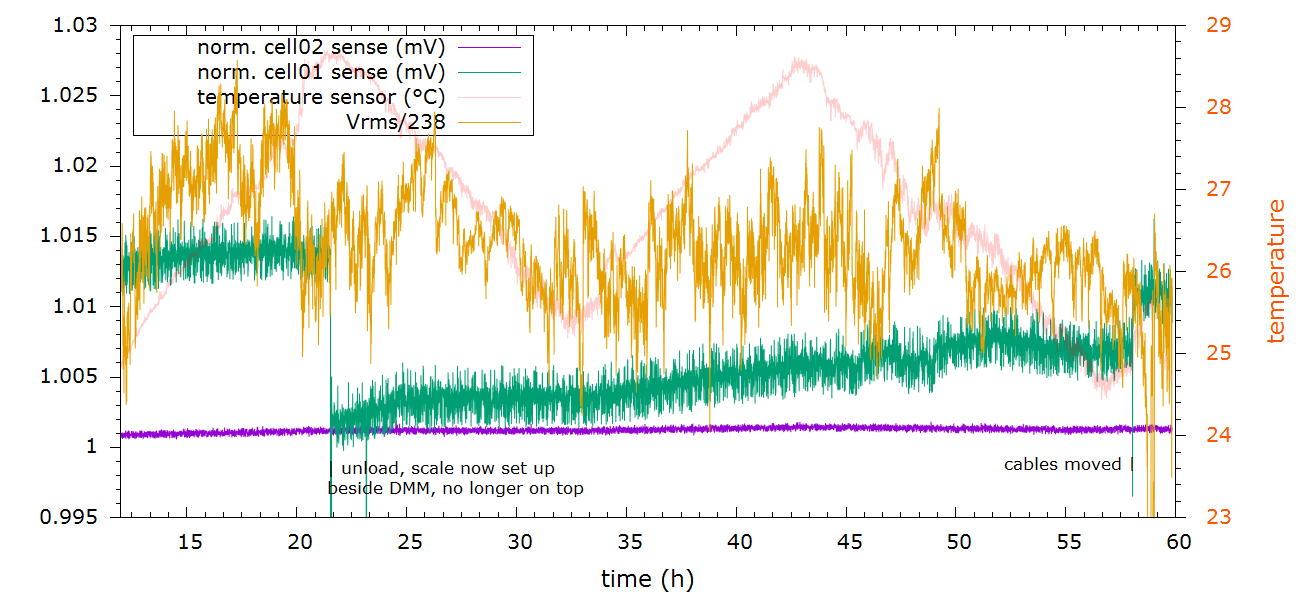The hardest part about running an experiment is to resist messing with it as it's running and there is time to figure out what things need to be changed or improved.
It's a bit counter-intuitive: A consistent measurement is better than one conducted under spontaneously changing conditions. It's easy to restart measurements when they're done within a matter of half an hour. With measurements that run for days on end it's a different story.
In the following graph two abrupt changes are recorded. The first one is due to the identification of a possible source of error and subsequent mitigation attempt:
- suspected heating effects of the multimeter underneath the device under test
- D.U.T. unloaded and set up in a different location next to the multimeter
- slight slack in the power and sensing cables ensured so they don't pull on the underside of the scale
The second change was caused merely by moving the cables around a bit, causing a 0.5% jump in the reading. The change equals ~25 g load change which can hardly be explained by a few 0.14 mm² IDC ribbon cables pushing in a different way. So beside thermoelectric effects, noise pickup seems a likely cause.

A third run will use just the HX711 front ends, the scale electronics and the four pairs of sense cables will be removed to monitor just the unperturbed load cell elements.
Adding the transformer to sample mains voltage variations was still a valid idea to quantify DMM transformer + LDO loss influences and understand the other measurements in retrospect.
So on the one hand it's always worth investing a couple more hours improving the experimental setup to get better and more credible results. On the other hand, part of cunducting experiments is to identify all the things that have been overlooked or to been considered.
We shall be doing this again. For science :)
 helge
helge
Discussions
Become a Hackaday.io Member
Create an account to leave a comment. Already have an account? Log In.